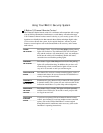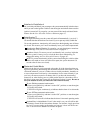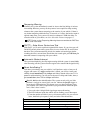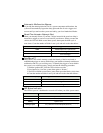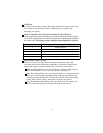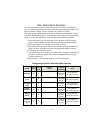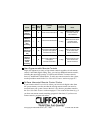
Tampering Warning
Normally, the system immediately sounds its siren at the first inkling of an intru-
sion attempt. However, you may set the system to issue a rapid five-chirp warning
whenever the system detects tampering to the exterior of your vehicle. If there is
any further tampering within the next 30 seconds, or if a door, the hood or trunk is
opened at any time, your system will sound a continuous 125dB siren blast. To
select the mode of your choice, see User-Selectable Features on pages 6-7.
NOTE: Turning on the Tampering Warning feature overrides the FACT fea-
ture, and vice-versa.
FACT™— False Alarm Control and Test
With FACT, you’ll never experience repeated false alarms. If your siren goes off,
DO NOT remotely disarm the system; allow it to run for the full 30-second siren
duration. The system automatically checks for another activated trigger before
sounding the siren a second time. Should the siren sound again, you will know for
sure
that someone is tampering with your vehicle.
Automatic Starter Interrupt
The system automatically prevents engine starting while the system is armed. Only
after disarming will the system allow the engine to be started with the ignition key.
Smart AutoTesting™
Each time you remotely arm your vehicle, it will perform a series of tests on all
triggers and sensors. If a
trigger
malfunction is found, you will be visually and
audibly alerted immediately with 4 chirps and flashes instead of the usual 2. If a
sensor
is malfunctioning, you will receive the usual 2 chirps and flashes, then,
a
few seconds later, there will be 4 chirps and flashes.
Specific Malfunction Identification: The system not only tells you if the
problem is a trigger or sensor, but it can also indicate the specific trigger or
sensor that is malfunctioning. This feature saves you time and money since
your installer won’t have to spend hours trying to determine where the prob-
lem is. Here’s how it works:
1. You receive the 4-chirp/4-flash signal upon remote disarming.
2. The LED indicator inside the vehicle will be flashing, pause, then repeat.
3. Count the number of blinks in one cycle between pauses (for your conven-
ience, the blink cycle repeats 5 times) and refer to the chart below:
Number of LED blinks between pauses Malfunction
1 blink
Vibration/impact sensor or optional sensor
2 blinks
Door trigger
3 blinks
Trunk or hood trigger
3




